
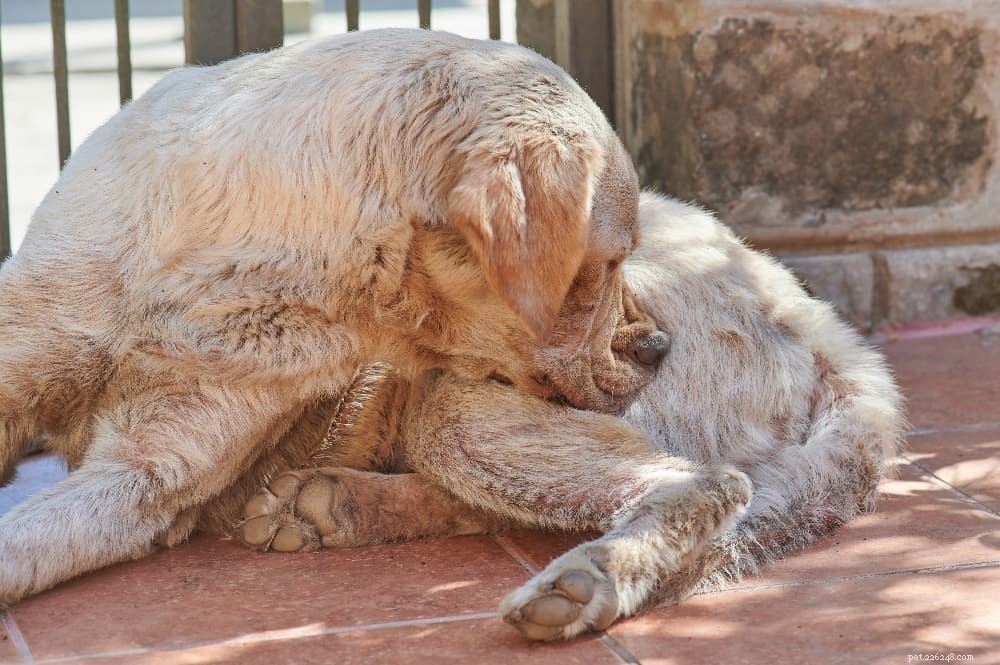
Узнайте, как распознать признаки укусов клопов на собаках, что делать, если вашего питомца укусили, и как в первую очередь предотвратить укусы!
Когда вы владелец домашнего животного, вы обязаны заботиться о здоровье своего пушистого друга. Распознавание, профилактика и лечение различных заболеваний являются частью того, чтобы быть хорошим родителем домашнего животного.
Имея это в виду, важно знать о различных укусах насекомых на собаках — на что обращать внимание, что делать, если вашу собаку укусили, и как предотвратить попадание этих вредителей в вашу собаку.
Даже если вы не думаете, что это реальный риск для вас и вашего питомца, нужно быть готовым на тот случай, если это станет реальностью. В лучшем случае укус вызывает лишь легкое раздражение; В худшем случае укус насекомого передает опасный для жизни возбудитель.
Мы составили это руководство, чтобы помочь вам узнать обо всем, что связано с укусами насекомых:признаки, что делать, если вы оказались в ситуации, когда вы ухаживаете за укусами насекомых, а также о том, как предотвратить их в первую очередь.
Если вы заметили системную, а не локальную реакцию на укус насекомого, такую как затрудненное дыхание или крапивница на всем теле, немедленно отведите животное к ветеринару, так как это может свидетельствовать о серьезной реакции.
Без лишних слов, давайте поговорим об укусах насекомых на собаках!
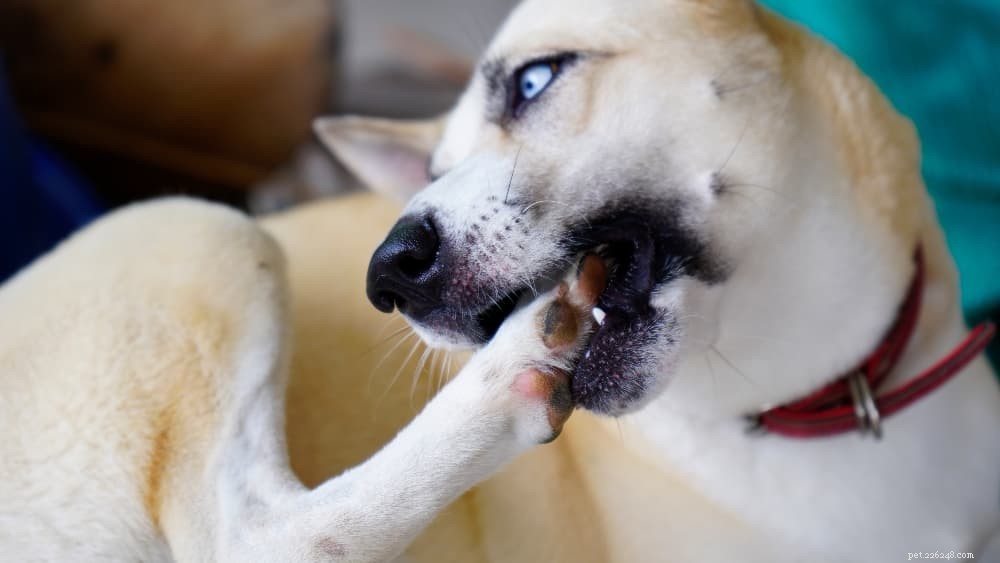
Когда дело доходит до укусов клопов у собак, первоначальный дискомфорт возникает из-за реакции их организма на белки в слюне или яде клопа. Некоторые домашние животные от природы более чувствительны к этим белкам, чем другие, а некоторые могут стать более чувствительными со временем из-за многократного воздействия.
Наиболее распространенными виновниками укусов, которые могут прийти на ум, являются пчелы, пауки, блохи, клещи и комары. К сожалению, поскольку ваш питомец находится ближе к земле, траве и кустарнику, он может быть особенно восприимчив.
Реакция на укусы насекомых у собак разная. В легких случаях это просто досадное неудобство, которое пройдет через несколько дней при правильном лечении. В большинстве случаев неанафилактических реакций вы можете заметить некоторые из этих распространенных симптомов укуса насекомых:
В то время как наихудший сценарий, анафилаксия, очевидно, страшен, знайте, что прогноз для несерьезных укусов хороший и что анафилактические реакции редки. Если ваш питомец особенно чувствителен к таким вещам, как пыльца и плесень, определенные продукты питания, или в прошлом у него были серьезные реакции на укусы насекомых, то он подвергается повышенному риску возникновения негативных реакций.
Обратите внимание на то, царапается ли ваша собака или облизывается больше, чем обычно, на наличие явных отеков или следов укусов, а также на горячие точки от повторяющихся царапин и укусов. Укусы красных клопов у собак, вызванные воспалением, довольно распространены.
Естественно, легко запаниковать, когда все, что вы можете думать, это:«Моя собака вся в укусах насекомых!» но знайте, что есть варианты. Если вы сомневаетесь, спросите своего надежного ветеринара!
Кроме того, в конце мы рассмотрим некоторые продукты, которые вы можете использовать дома, чтобы помочь вашему питомцу чувствовать себя лучше и ускорить процесс выздоровления.
Ниже мы рассмотрим некоторые распространенные укусы насекомых на собаках. Этот список не является исчерпывающим, но мы попытались сосредоточиться на типах ошибок, которые наиболее распространены в Канаде и большей части США. Убедитесь, что вы знакомы со всеми насекомыми, характерными для вашей местности!
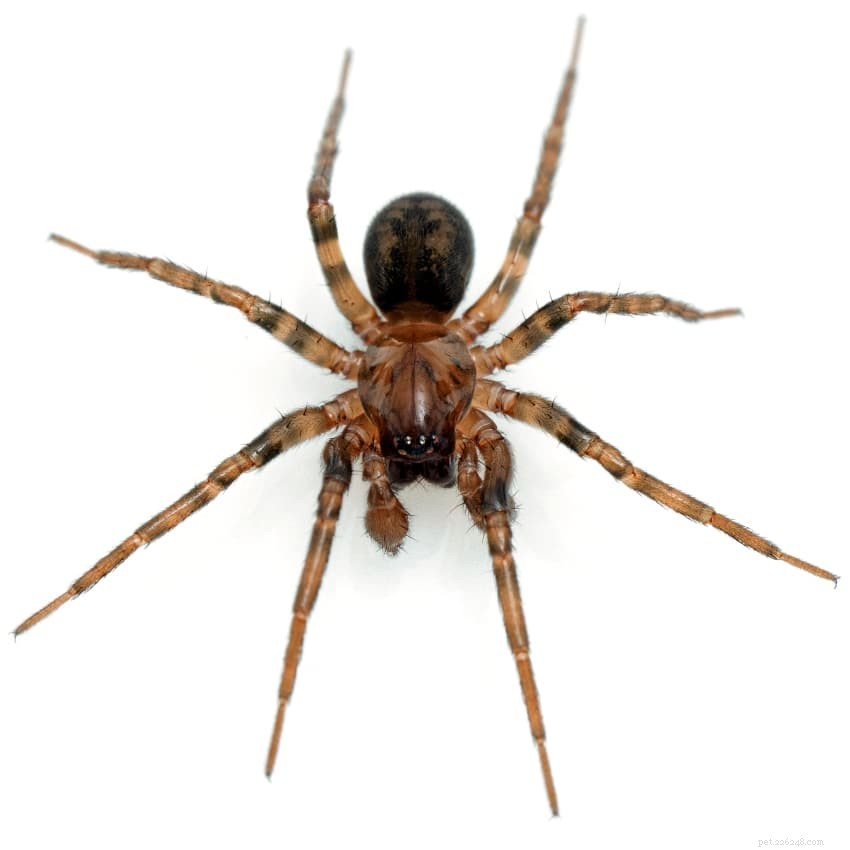 Пауки вызывают в воображении кошмарные сцены ужасов и вселяют панику даже в самых бесстрашных из нас. Но, к счастью, большинство укусов пауков в Канаде безвредны. Большинство укусов не вызывают ничего, кроме зуда, незначительной боли, припухлости и покраснения, и, конечно же, серьезного случая хиби-джиби.
Пауки вызывают в воображении кошмарные сцены ужасов и вселяют панику даже в самых бесстрашных из нас. Но, к счастью, большинство укусов пауков в Канаде безвредны. Большинство укусов не вызывают ничего, кроме зуда, незначительной боли, припухлости и покраснения, и, конечно же, серьезного случая хиби-джиби.
Большинство обычных пауков, которые проникают в ваш дом, безвредны. Они скорее убегут, чем попытаются укусить вас или вашу собаку. Тем не менее, есть несколько видов пауков, которые достаточно опасны, чтобы научиться их распознавать и избегать.
Вот 3 самых опасных паука в Канаде:
Яд коричневого отшельника разрушает эритроциты и вызывает локальное повреждение тканей вокруг места укуса, что делает его самым опасным пауком, обитающим в Канаде.
Они не родом из Канады и плохо переносят наш климат. Обычно их случайно завозят в Канаду из более тропической среды с такими продуктами, как фрукты.
Коричневые пауки-отшельники коричневого цвета, часто с узором в форме скрипки на спине, размером тела около 8-15 мм с ногами от 2-3 см. Они любят темные и необитаемые места и активны ночью. Большинство укусов происходит, когда паука непреднамеренно беспокоят, например, когда вы или ваш питомец переворачиваетесь на него во сне.
Яд от укуса коричневого паука-отшельника на собаке убивает ткани вокруг места укуса, создавая медленно заживающую рану, которая может увеличить риск вторичной инфекции. .
Яд может продолжить свой путь и попасть в кровоток, где он достигает внутренних органов и повреждает их. Если позволить повреждению прогрессировать без вмешательства, это может привести к смерти.
Черная вдова — еще один вид пауков, не являющийся аборигенным для Канады, часто попадает сюда с грузами фруктов, например винограда. К сожалению, некоторые виды черных вдов обосновались в некоторых частях Британской Колумбии и Южного Онтарио, поэтому они встречаются чаще, чем нам хотелось бы.
Хотя черные вдовы считаются смертельно опасными, они не так опасны, как думает большинство людей. Укус черной вдовы очень неприятный, но редко смертельный.
Кроме того, черные вдовы обычно не агрессивны и атакуют только в обороне. Как вид-каннибалист, они гораздо злее друг к другу, чем к млекопитающим, которые подходят слишком близко.
Действуя в обороне, черные вдовы могут кусать, не вводя яд, что делает его скорее предупреждающим укусом и сигналом к отступлению.
Хотя у всех нас в голове есть изображение паука черной вдовы — гладкое черное тело с ярко-красными треугольниками на спине — вы можете не знать, что эта эстетика предназначена исключительно для женщины. Самцы, как правило, меньше и имеют более приглушенные цвета, такие как серый или коричневый, и могут иметь белые полосы вместо характерных красных отметин.
Этот паук — единственный местный канадский вид пауков, который может быть опасен для собак и людей. Они названы в честь их методов охоты. В отличие от большинства пауков, которые плетут паутину, чтобы поймать свою добычу, пауки-волки выслеживают свою добычу напрямую, атакуя ее. Ура!
Хотя они могут быть более агрессивными видами, они обычно оставляют более крупных млекопитающих, таких как ваша собака, в покое, если ваш любопытный пес не вторгается на их территорию.
Хотя пауки-волки встречаются чаще, чем коричневые отшельники и черные вдовы, их укусы наименее болезненны. Яд обычно вызывает только легкий отек, покраснение и дискомфорт в месте укуса.
Так как же выглядит укус паука на собаке? Первое, что вы заметите, это небольшой отек. Пауки обычно нападают в обороне, они проворны и быстры, поэтому они могут нанести удар в любое место на теле вашей собаки, до которого смогут дотянуться.
Вы можете найти укус паука на морде собаки, укус паука на лапе собаки или укус паука на хвосте собаки. Все зависит от того, как ваша собака подошла к 8-ногим вредителям. Тщательно осмотрите опухшую область, чтобы найти рану от укуса и оценить ущерб.
Рана может быть небольшой в зависимости от размера и типа паука, который укусил вашу собаку, но часто она краснеет, опухает и имеет отчетливую колото-резаную рану. Чем опаснее яд, тем шире распространяется реакция. Некротический яд коричневого паука-отшельника может вызвать более крупную рану, поскольку яд повреждает окружающие ткани.
Через некоторое время может появиться белое поражение с темным струпом в центре, которое может превратиться в медленно заживающую язву. Менее распространенные симптомы включают анемию с кровью в моче в течение первых 24 часов и лихорадку со слабостью в течение первых 2–3 дней.
Однако симптомов может и не быть. Это может быть немного трудно увидеть из-за шерсти на пути, но там, где произошел укус, может быть след в яблочко.
Лечение укуса обыкновенного домашнего паука в Канаде мало чем отличается от лечения любого другого типа основного укуса клопа. Вам нужно будет продезинфицировать рану, как только вы заметите след от укуса.
Вы можете использовать местные средства, такие как кокосовое масло или один из наших любимых продуктов против зуда, описанных ниже, чтобы успокоить любой зуд, который может заставить вашу собаку лизать или царапать область. Это поможет предотвратить раздражение раны бактериями во время ее заживления.
Как и в случае с большинством проблем со здоровьем, лучше перестраховаться, чем потом сожалеть. Если у вашей собаки проявляются признаки более серьезной реакции на укус, немедленно обратитесь к ветеринару.
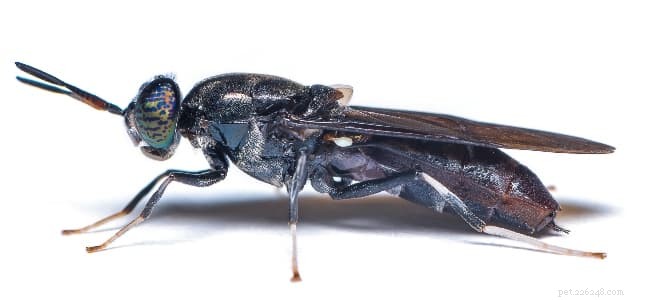
Мошек иногда также называют комарами. (Мы называем их раздражающими!) Мошки роятся большими группами, и вы можете найти их в любое время года.
К счастью, большинство укусов безвредны, а укусы мошек у собак, как правило, не несут такого же риска передачи болезни, как укусы клещей и комаров.
Если вы заметили укусы, лечение укусов черных мух у собак предполагает осторожное мытье шерсти вашего питомца теплой мыльной водой и соблюдение рекомендаций по заживлению ран. Если вы подозреваете, что у вашей собаки аллергическая реакция на укусы, позвоните своему доверенному ветеринару.
Знайте, что мошки любят размножаться в ручьях, поэтому будьте осторожны, если вы планируете исследовать некоторые ручьи в своих приключениях.
Укусы черных мух на собаках часто выглядят как плоские красные пятна. Иногда это пятно из-за контура выглядит как яблочко, но это ненадежный индикатор. Они будут преследовать открытые участки тела вашего пушистого ребенка, поэтому вы можете увидеть укусы мошек на животе вашей собаки или укусы черных мух в паху вашей собаки. Хотя, скорее всего, первое, что вы заметите, это кусание и царапание.
Когда дело доходит до того, чтобы отличить укусы черных мух от укусов клещей у собак, иногда люди путаются из-за яблочка, который обычно также ассоциируется с клещами. Однако на самом деле такое «яблочко» от клещей не встречается у собак, поэтому, если вы видите «яблочко», оно вызвано другим насекомым (например, мошками).
Сами укусы выглядят намного хуже, чем они есть на самом деле. Мошки будут атаковать участки тела вашей собаки с более открытыми участками кожи, например, низ живота или внутреннюю часть лап. Вы заметите ярко-красные пятна шириной около 1 см.
Хотя мошки довольно распространены в Канаде, особенно в более влажном климате, они не единственные виды мух, которые любят кусаться. Вот еще несколько видов мух в Канаде, которые могут укусить вашего пса:
Некоторые из этих более крупных видов мух производят особенно болезненные укусы. Хотя долгосрочные последствия не лучше и не хуже, чем укусы мошек, сам укус, скорее всего, вызовет сильную реакцию у вашего питомца.
Реальный риск укусов мух у собак — это риск вторичной инфекции при расчесывании или облизывании зудящей раны. Чем больше место укуса или чем больше оно воспалено, тем более зудящим и неудобным он будет.
Additionally, common house flies like to lay their eggs in open wounds, so if the bite isn't properly treated, your pooch could end up hatching some creepy crawlies in his skin. (Do yourself a favour, don't google image search this one, it's... unsettling. )
Different species of flies like to lay eggs in skin wounds. This is known as a maggot infestation. Maggots on dogs happen when eggs are laid in a wound or around an infected wound, and the larvae hatch and invade the surrounding tissue.
You might see the maggots themselves in a sore or wound, along with raised, red sores near the site. Unfortunately, the site (known as the “strike site”) can attract other flies and house maggots from more than one type of fly.
You might wonder to yourself, “How do I get rid of maggots on a dog? What kills maggots on a dog?!” But don’t panic, there are solutions.
Treating maggot infestations is a two-pronged solution. You need to kill the maggots with antiparasitic medications from your vet, and you need to treat the wounds to close them and prevent new eggs from being deposited.
Moving forward, routine bathing and grooming are essential, since urine and feces that collect in fur attract flies. Make sure all garbage, organic plant matter, and poop are routinely removed from your yard. Standing water attracts flies so make sure that this is taken care of as well.
The sooner you recognize black fly bites, the sooner you can start treating them. Black flies often swarm pets, so you may be treating a cluster of bites instead of just one. Because of the risk of maggots in an open wound, it's important to keep the bite wounds clean and help them heal quickly.
Because these small flies go for the tenderest areas of your dog's body, the skin least protected by fur will be the itchiest. Controlling the itch and healing the skin will be key. Coconut oil or aloe is a great way to moisturize the skin and cut the itch.
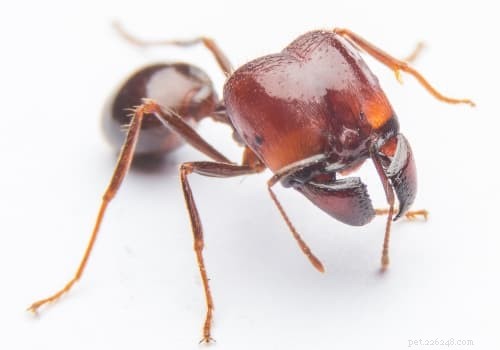
Like most insect bites, ant bites on dogs are never fun and can range from mild to severe. Your fur baby’s immune system reacts with their venom, which can cause swelling and pain in mild reactions and anaphylaxis on the severe end.
Since your pet is on their feet and leads with his nose, it’s common to see ant bites on dog paws and ant bites on dog mouths where they are likely to come in direct contact. Common ant bites on dogs symptoms include difficulty walking due to bites on paws, hives, chewing or licking at the area, and swelling.
While not all ant bite cases are a reason to go to the vet, you should be extra cautious if your pet has had bad reactions in the past and is hypersensitive to other insect bites. Look out for signs of a more serious reaction such as vomiting, collapse, weakness, and difficulty breathing.
Ants are likely all over your dog's normal environment, so it's quite impossible to always avoid them, but it is a good idea to know how to recognize signs of ant nests and colonies so that you can keep your dog at a safe distance.
Even when they aren't attacking your pooch, ants can still be a huge nuisance if you have pets. As scavengers, they are drawn to loose food. This means that your dog's food and treats are an ideal target.
Learn how to deter ants from snacking on your dog's dinner in Bugs in Dry Dogs Food:Preventing Infestations and Eliminating Pests.
As one of the smaller pests on our list, ant bites are often small, and can easily be missed if your dog isn't showing any signs of discomfort, but different species of ants can give varying degrees of painful bites.
Here are some of the common types of ants in Canada and the types of bites you can expect from them:
Typical these little black or brown ants are pretty unlikely to bite unless your dog disturbs their colonies. Most common house ants aren't even strong enough to pierce your dog's skin, and for those that can, the bites are often not very painful.
This doesn't mean they don't post a risk to your pooch. While a single house ant bite may not be painful and will only leave a small bump behind, several hundred bites from a swarm of ants could leave your dog very itchy.
What about fire ants. Do they bite or sting?
Yes. Though some ants are known for their unpleasant bites, fire ants have a nasty habit of stinging their prey too, and that sting is very painful.
In fact, fire ants both bite and sting when disturbed. Their mandibles are used to latch onto the skin and pierce it, leaving a target for the needle-like stinger to inject the venom.
Severe symptoms of fire ant attacks usually show up within 6 hours, though initial discomfort can be seen immediately. You might notice drooling, eye discharge, incontinence, other digestive symptoms, and even trouble walking.
These ants come from warmer or tropical areas, they can find the heat and moisture they need in some parts of Canada by burrowing near buildings.
Though not particularly aggressive, pharaoh ants can bite or sting, though they rarely do any serious damage unless they attack in a large swarm.
No matter what kind of ant bites your pup, don’t spray them with water as this will cause the ants to cling on harder. Brush them off, wash your pet’s wounds well with pet-safe soap to disinfect the bites.
One or two small bites will often go completely unnoticed, but several or even dozens may require an anti-itch treatment to keep your dog from scratching himself raw.
If the bites are painful, it can help to apply a cold compress to reduce swelling and monitor them for worsening conditions. If more severe symptoms present themselves, then it's time to call the vet.
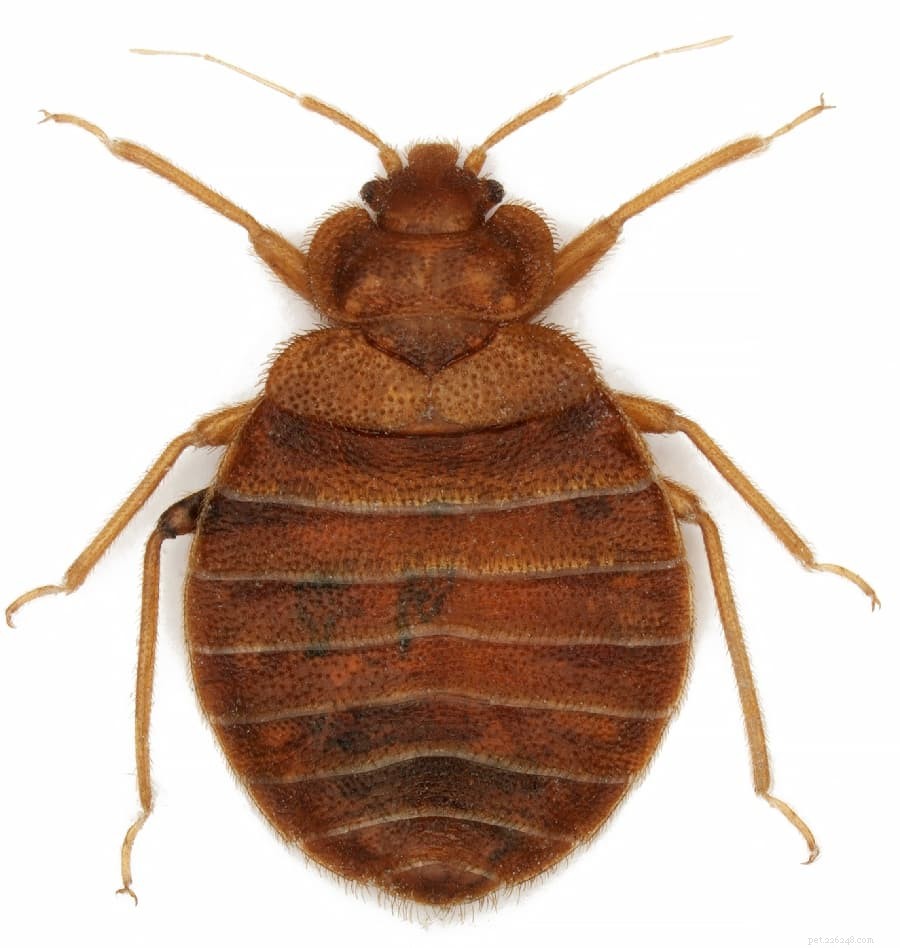
Ahh, bed bugs… Everyone’s favourite. The answer to the question you were about to ask, “Do bed bugs bite dogs?” is yes, yes they do.
Bed bugs are flat pests about the length of an apple seed and like to hide in crevices, such as in bedding.
We typically associate bed bugs with grimey motels, but the truth is that no one is completely safe. Bed bugs get their nutrition from warm-blooded animals - AKA you and your pooch. Bed bugs will bite onto your dog, feed, and then release themselves, so it’s not too likely you’ll actually see any bed bugs on dogs, nor do bed bugs live on dogs.
However, if you are worried about your dog carrying bed bugs on them and spreading them to you and your house, you should be. One female bed bug can hitchhike on your pooch’s fur or you can bring one home on your pant cuff and BAM - an infestation is born.
Luckily, it isn’t too common for them to transmit diseases like some other insects do. However, bed bug bites on dogs can cause extreme itch and discomfort, which can lead to secondary wounds from scratching and subsequent infections, as well as a lot of stress!
Bed bugs bites on dogs are often small red welts or itchy lesions, which sometimes get mistaken for flea or mosquito bites. They’ll sometimes be in a line or cluster. Bed bugs seek out heat so you will likely find bed bug bites on dogs' bellies or limbs.
Excessive itching will likely be the first indicator that something’s up. You might also see some suspicious translucent shed exoskeletons laying around, along with black spots that smear when you try to clean them (bed bug droppings) or bloodstains on bedding.
Bed bug infestations can be tricky to get rid of once you know you have them. The first thoughts that come to mind are probably going to be how to treat bed bugs on dogs, or more specifically, how to treat bed bug bites on dogs.
Some topical anti-itch treatments can help bring your pooch some comfort while you eradicate the blood-sucking pests from your home.
Since bed bugs only stay on your pup while they’re eating or hitchhiking you don’t need anything for your furry friend except a nice bath and an anti-itch shampoo, like Tropiclean OxyMed Anti-Itch Medicated Shampoo.
You’ll want to clean all of your bedding in hot water, all of your pet’s toys and accessories, scrub all of the surfaces that they like to lounge in, and vacuum, vacuum, vacuum. Target crevices and soft surfaces especially.
You’ll then need to treat your home with a bed bug product that will kill any remaining pests. Diatomaceous Earth, like Thrive Diatmoceous Earth, can be used to deter bed bugs but isn't always as effective as lice-specific treatments.
You need to be patient, as this is an ongoing process that you don’t want to only do halfway. A bed bug can go months without feeding and can fit into crevices the width of a credit card.
Learn more about how to safely use Diatomaceous Earth for all kinds of pest problems in What is Diatomaceous Earth for Dogs.
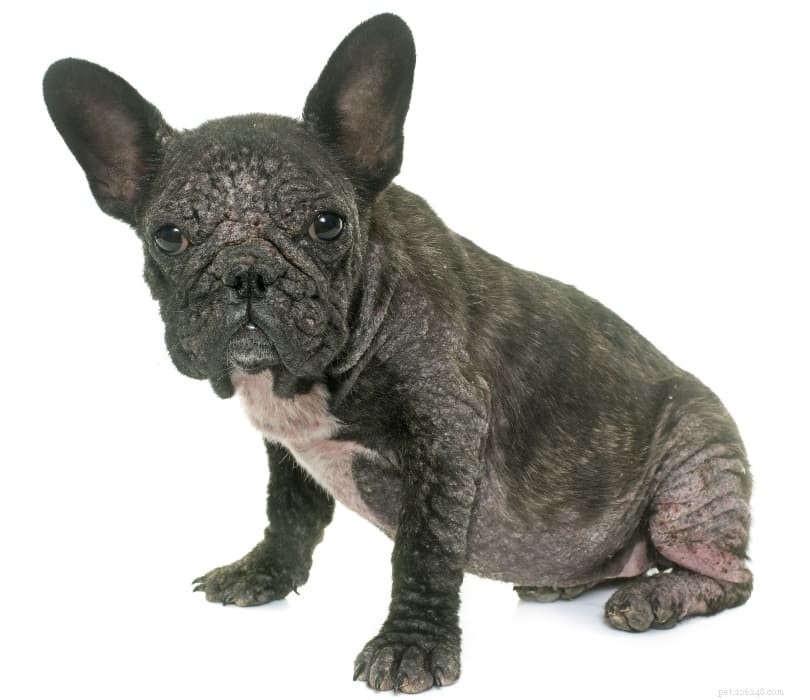
What are mites on dogs? Mites refer to a number of different microscopic parasitic organisms. You might hear of grass mites on dogs, harvest mites on dogs, and oak mite bites on dogs. They’re usually less than 1 mm in length, meaning they can be easy to miss. (Dun, dun, dun.)
They can’t fly but don’t celebrate just yet. They make great hitchhikers and can reproduce very quickly. They spend their entire 17-21 day lives on the host, so that's a lot of time to reproduce and spread.
If the mite infestation lasts long enough without treatment, they can cause mange.
Mange is a disease caused by unchecked mite infestations. When the mites are able to populate quickly, they spread across your dog's body and start feasting.
Mange can be challenging to get rid of as it often causes several other skin issues, like bacterial infections, hair loss, and insane itchiness. There are two types of mange that are common in dogs:Sarcoptic Mange and Demodectic Mange.
You might hear mange referred to as canine scabies. This is referring to sarcoptic mange. This type of mange is highly contagious to other dogs and even to humans, so it's always best to treat mites quickly before mange develops and spreads.
Sarcoptic mange spreads fast and does significant skin damage that can take weeks, even months to heal, depending on the severity of the skin damage. If you suspect your dog has mange, contact your vet immediately for appropriate diagnosis and treatment.
This type of mange is also caused by an infestation of mites, but a different kind of mites. These mites are always present on your dog's skin and are a natural part of the ecosystem that is their body. Generally, a healthy dog can easily keep these mites at bay, but a compromised or sick pet may not be able to control the mite population.
While the discomfort from demodectic mange is similar to sarcoptic, the mites can be a little easier to treat if you can boost your dog's immune system. It's not uncommon for dogs to get small patches of demodectic mange that heal naturally if you strengthen their immune response.
Additionally, demodectic mange isn't contagious to you or other pets because a normal immune system can easily prevent them from populating.
So what do mites look like on a dog? Mites are too small to see, but you can still see the destruction they leave behind. Mites often leave behind droppings that cause this initial itchiness, which might be visible on shorter-haired dogs, or on areas of your dog where the skin is more visible, like ears.
The skin might start presenting with small solid bumps that look like goosebumps. Your pet then scratches and licks the bumps which will turn them into sores.
When your pet keeps scratching and opening these sores, they can get infections. Over time if left untreated, they can develop oily dandruff and thickened skin with crust buildup, along with oozing sores. Yikes!
If your pooch recently got infested by mites, you might notice a sudden onset of intense itching. Mites can attack any part of your dog's body, but love ears because they are warm, moist, and dark.
Ear mites in dogs cause another kind of mange that happens on the external ear and can inflame the ear canal in dogs. What do ear mites look like in dogs? You might notice the symptoms of ear mites in dogs before you notice the mites themselves.
Signs of ear mites in dogs include scratching the ears and shaking the head. Ears that are usually upright might also droop.
With all of this info, you might be wondering about home remedies for ear mites in dogs, as well as how to treat ear mites in dogs at home. What’s the best way to get rid of mites on dogs?
Common home treatments for ear mites in dogs might include apple cider vinegar for mites on dogs, mineral oil, and diatomaceous earth for mites on dogs. There’s also ivermectin for ear mites in dogs that can help get rid of the parasites.
Standard bug bite treatments can help to reduce the itch, but the only way to get rid of your dog's discomfort is to get rid of the mites. The longer they stick around the more damage they will do to your dog's skin.
Mites are not the easiest things to kill, so talk to your vet about appropriate medications to rid your dog of mites. Ear mite medications can be found at your local pet store, but bigger infestations like mange need more aggressive treatment from your vet.
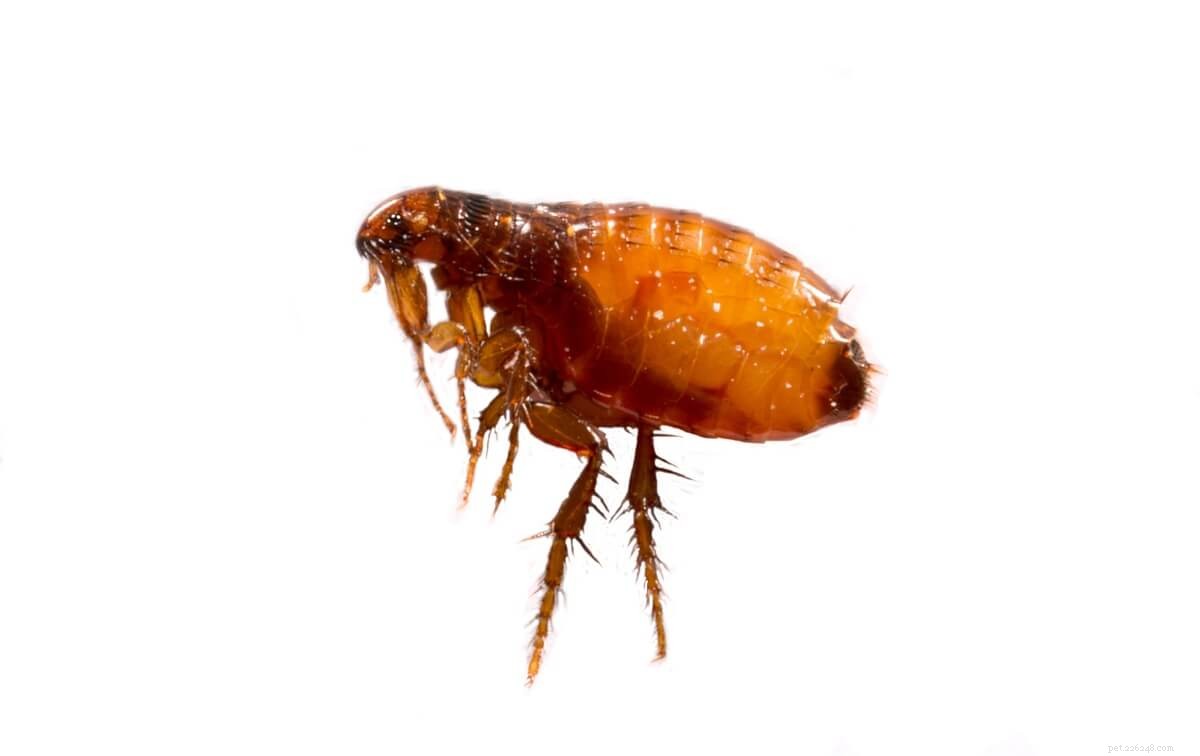
Fleas send shivers down any pet lover’s spine. Fleas feed on your pooch’s blood and leave tiny raised nodules behind that itch and stay inflamed for weeks. Some poor dogs are more sensitive than others and can be sent into itchy misery after just one bite.
It doesn’t take much for an infestation to take hold in your home. All it takes is one flea to hop onto your furry friend and you’re in for the long haul.
If you notice your pet scratching or licking themselves more than usual, it might be time to check them for fleas. Fleas like dark humid areas, like the neck, ears, lower abdomen, and tail base. Because of their small size and dark colour, they can be hard to spot, so the fleas themselves likely won’t be the first sign. They also typically only stay on their host to feed.
Look for clusters of bite marks, as well as “flea dirt” that turns from brown to red once it is wet by a paper towel. Scabs might pop up from repeated scratching and biting, and if your pet keeps reopening them it could lead to secondary infections and complications. They might also start losing hair in those areas.
Pets that are particularly sensitive can develop flea allergy dermatitis. If they end up swallowing a flea infected by a tapeworm, they can also develop tapeworms. Luckily tapeworms usually don’t cause immediate harm and can be treated with medication by your vet.
If you’re able to confirm that your furbaby has fleas, you need to make sure that your home is completely free of them so you don’t prolong the misery. If you aren’t thorough and end up missing a few, it can cause a whole new infestation.
Clean crevices carefully, and wash all bedding several times in hot water over the next few weeks. Dispose of vacuum bags in sealed bags outside immediately.
Flea shampoos as well as diatomaceous earth can help rid your pet’s fur of fleas, which can be used alongside anti-itch treatments. A flea comb can help you make sure you don’t leave any pesky bugs behind.
Once the fleas are gone, you can continue to treat the bites by keeping them clean and by using anti-itch treatments as needed to keep your pet from scratching the wounds open.
Whatever you do, make sure that your home is treated for fleas too. The last thing you need is to start another infestation right after your pet had started to heal!
For more information, check out our blog Ultimate Guide to Fleas on Dogs:Signs, Treatments, and Prevention!
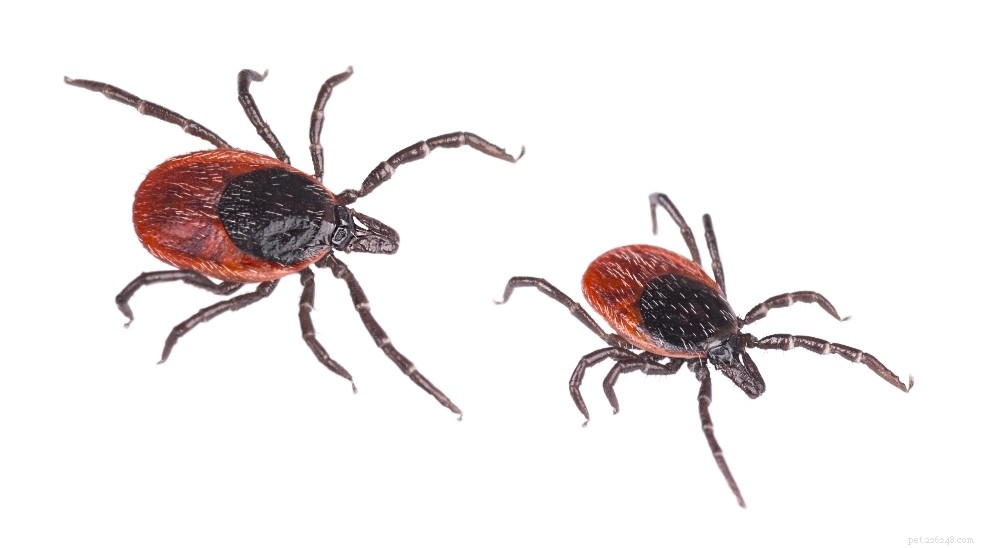
Let’s talk about ticks. Ick!
Ticks come around in warmer months and like to feed on the blood of their host, which can include you and your pup.
Ticks will usually cling on close to the head, neck, feet, and ears. You’ll be able to spot them if you look. Their bites aren’t usually painful, but they can carry diseases such as Lyme disease and parasites.
As soon as you see a tick on your pet, you should remove it as soon as possible to prevent disease transmission.
It’s important not to leave the head of the tick behind. You’ll want to take a pair of tweezers and get them as close to your pup’s skin as possible, pulling in a straight motion.
If you want to be really sure you got it all, bring Fido to the vet. Either way, it’s smart to bring the removed tick to the vet so it can get tested for disease and to discuss the next steps.
Tick bites are usually unique from other pest bites for two reasons. This is because ticks burrow into the skin to feed, so the bite usually still has a tick in it. You may be able to see the tick's body sticking out, or the tick can fully burrow into the skin, leaving a hard, raised bump.
In cases of lime disease, you will see a large red circle with a red ring around it, like a bullseye. If you see this marking, you should take your pet to the vet quickly for appropriate treatment.
There are some tick prevention medications that you can look into. Ask your vet what they recommend. As for prevention, it’s always a good idea to mow your lawn regularly and remove tall weeds so you can get rid of any tick hiding places.
Because ticks are one of the larger pests that like to burrow into the skin, they can leave behind a bigger hole than other smaller pests. This means that it's especially important to keep the wound clean.
Disinfecting the wound is step one, and you should continue to keep the wound clean while it heals over the next few days. Coconut oil can be used on the wound once the skin has closed to help soothe the itch and speed healing.
For more info on ticks on dogs, check out our blog Ticks On Dogs:Complete Guide to Tick Prevention on Dogs.
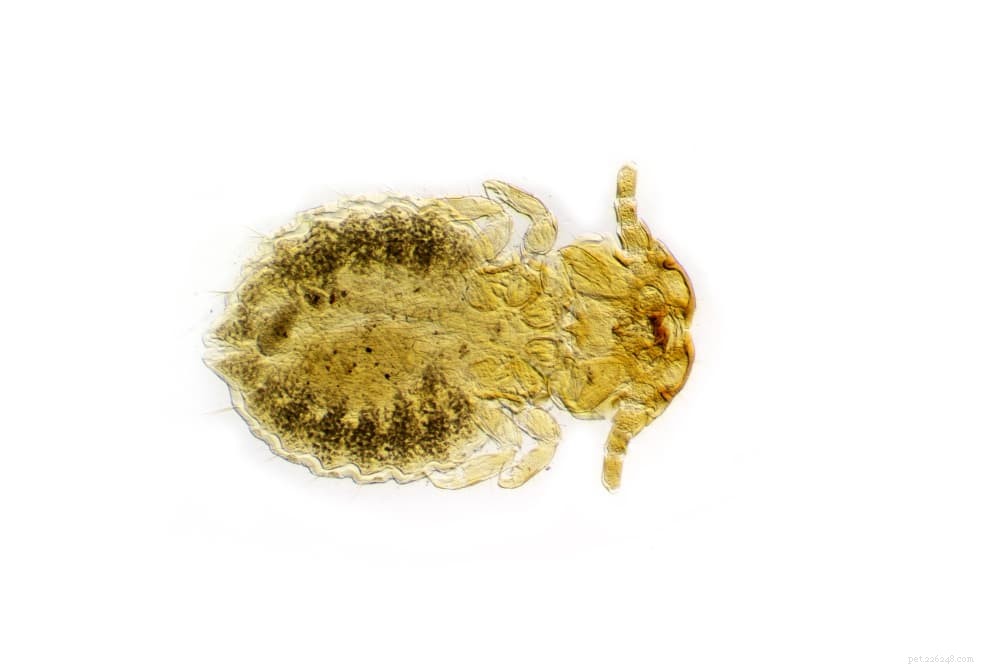 Lice are small, flightless bugs that can live in your pet’s hair (and yours, for that matter). Lice feed on skin debris, secretions, and blood. (Nice.)
Lice are small, flightless bugs that can live in your pet’s hair (and yours, for that matter). Lice feed on skin debris, secretions, and blood. (Nice.)
Lice eggs are called nits, and they’re glued to the hairs near the skin of their hosts. Unfortunately, you can’t get rid of them with just a simple bath.
You’ll need a fine-toothed comb to dislodge nits, as well as treatments to kill live lice. It’s a tedious process, but don’t skimp on it! You don’t want to miss any and have to deal with it all over again. Dispose of all collected lice, dead and alive, in a sealed container.
Treat any other pets that have come into contact with your infested pooch as if they had lice too. Make sure that you wash all of your pet’s bedding and accessories thoroughly in hot water, and treat them with the appropriate sprays.
As with most insect bites, oftentimes the first sign of a problem is scratching and biting. There might be small wounds from the bites that can become infected. You can diagnose lice by seeing the lice themselves, or seeing their eggs in your pet’s fur.
The bites themselves are not always evident until they become more inflamed from your dog's scratching or licking the bites, but you may see small red bumps.
Lice bites will typically heal on their own, but it doesn't hurt to use a disinfectant treatment, like colloidal silver spray or Neosporin, to keep the bites from getting infected.
Preventing your dog from licking or scratching the bites can be done with a cone collar if your dog is extra persistent.
For more information, check out our blog Lice on Dogs:Tips for Safely Delousing Your Itchy Dog!

These flying nuisances are practically unavoidable during the spring and summer months, so despite your best efforts, you are likely going to be dealing with a few mosquito bites on your dog. (and yourself!)
Mosquitos are blood-sucking pests that will feed on any available warm-blooded animal. Their needle-like mouths easily penetrate the skin.
You are probably already familiar with a mosquito bite or two, or twenty, on yourself, and the results are quite similar in dogs. Round, raised, and irritated bumps form at the bite site, leading to an insatiable itch.
The more your dog licks and scratches to try to soothe the itch, the bigger and more irritated the bites can get. They can get infected if not treated properly, leading to even further irritation and skin damage.
For dogs that are particularly sensitive to bug bites, the red lumps could lead to swelling, hives, or even anaphylaxis, so preventing mosquito bites for these pets is extra important.
Mosquitos are known for causing unbearable itchiness, but that's just the tip of the iceberg. While the mosquito bites might be annoying, the risks of greater harm are in the potential diseases or parasites they could be carrying.
Check out Treating Mosquito Bites on Dogs and find out how to protect your pet from these annoying summer pests.
One of the most fatal parasites known to dogs, heartworms are spread predominantly through mosquito bites, so appropriate heartworm prevention aids from your vet are recommended in high-risk areas, like southern Ontario.
Heartworm larvae are transmitted when mosquitos bite your dog and work their way through the bloodstream to the heart and lungs. They continue to develop into full-grown worms that block arteries and damage organ function.
Heartworms are deadly if not treated, but to make matters worse, symptoms of heartworms are hard to spot, and sometimes non-existent, until the worms have done serious damage.
Preventing heartworms is always easier than treating them, so ask your vet about the best preventative methods.
Though not as dangerous as heartworms, tapeworms can also be transmitted through mosquito bites. Tapeworms live in the digestive tract for a long time if not caught.
Tapeworms infestations are also not too easy to spot until they are well-established in your dog's gut, so regular deworming routines can help to prevent tapeworms. The most obvious way to identify tapeworms in dogs is through your dog's stool.
Tapeworms have segmented bodies, and as they grow will shed the end segments routinely. These small sections of the worm's body are passed through your dog's stool and you will be able to spot what looks like small grains of rice.
Learn more about tapeworms and other common parasites in dogs in our blog - Worm in Dogs:Treating Intestinal Parasites in Your Dog.
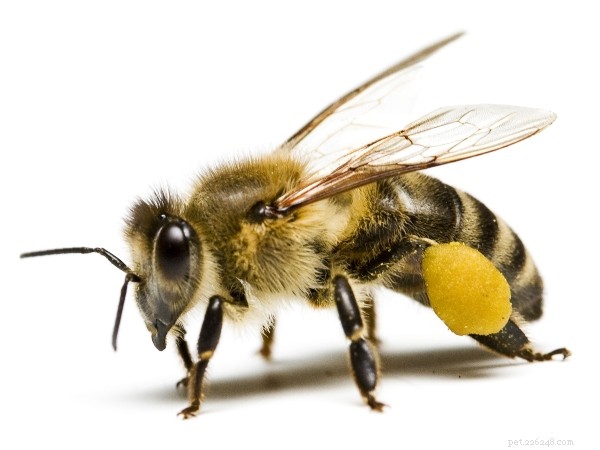
Even though we are talking about bug bites on dogs, some pests don't bite, they sting. The results can be just as unpleasant and painful though. Stings from insects can be prevented and treated very similarly to bug bites.
Every once in a while a curious pup sticks their face in a pretty flower, only to be met by a bee. Бывает. The classic image is a dog with a puffy face, but they’re also prone to bee stings on their paws (or anywhere they come into contact with those jerks).
The effects of a bee sting can range from mild to severe. If your pet has a history of more severe reactions, take them to the vet immediately as the situation can be life-threatening.
In mild cases, they’ll skate by with just a bit of swelling or pain in the sting area. If you notice full-body hives, diarrhea, vomiting, struggling to catch their breath or if they collapse, this could be a sign of anaphylaxis and they should be taken in immediately.
If you see a stinger and are feeling confident, you can scrape it out or use tweezers. You can neutralize some of the venoms with baking soda and water and should apply a cool compress to help with swelling and pain.
Even without a stinger present, the area around the puncture can be red, swollen, and itchy. Topical treatments to clean and soothe the area may need to be reapplied until the irritation subsides.
For more information, check out our blog How to Prevent and Treat Bee Stings On Dogs!
Wasps and hornets are other flying pests that might be unhappy with your dog's nosey behaviour. Unlike bees, wasps and hornets are more aggressive by nature and have the ability to sting your dog repeatedly, so they can do a lot more damage if your dog gets too close.
Treatment of the sting wound is the same as with bees, though wasp and hornet stings may be a little more painful. Reducing the inflammation and disinfecting the wound will help speed the healing and limit discomfort.
Lots of bug bites on dogs can be easily treated at home. Once you've identified the type of pest that has infiltrated your dog, you can choose treatments to clean, soothe, and evict the pests from your dog's body.
Here are some of our favourite products for treating bug bites on dogs:
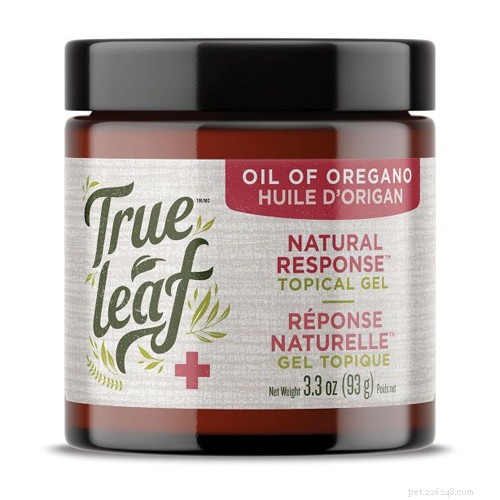 The first step to treating bug bites on dogs is a disinfectant treatment to remove bacteria and other debris from the bite site. For serious wounds, or bites that have become infected, you need to contact your vet for appropriate treatment, but minor bites can easily be treated at home. Try one of these products:
The first step to treating bug bites on dogs is a disinfectant treatment to remove bacteria and other debris from the bite site. For serious wounds, or bites that have become infected, you need to contact your vet for appropriate treatment, but minor bites can easily be treated at home. Try one of these products:
Silver is one of nature's most effective antiseptics. It has natural anti-bacterial, anti-viral, and anti-fungal properties that can be used to disinfect any small wounds without stinging or drying out the skin.
Thrive Silver Shield is an easy spray-on silver mixture that is safe for use on dogs, and even lick safe.
This naturopathic wound treatment relies on the natural disinfectant properties of echinacea and goldenseal root to prevent bacteria from infiltrating the wound. Natuvet Skin Aid Spray is more than an antiseptic, but can also help to topically reduce some of the swelling at the site of the bite.
Another natural wound and infection topical treatment, True Leaf Natural Response Gel uses pet-safe ingredients like olive oil and honey to eliminate harmful bacteria and help kickstart the healing process of the bite.
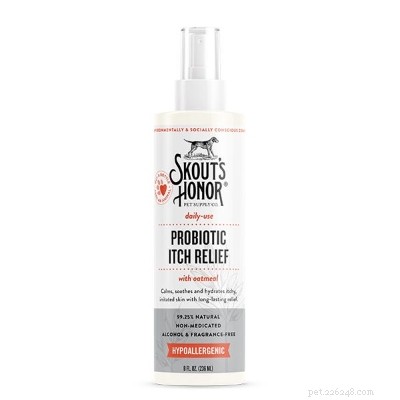 Most minor bug bites on dogs heal on their own, but your dog's licking and scratching can introduce new bacteria and cause further irritation that makes the bite worse.
Most minor bug bites on dogs heal on their own, but your dog's licking and scratching can introduce new bacteria and cause further irritation that makes the bite worse.
By combining an anti-itch treatment with the wound care treatment, you can prevent the bites from driving your dog nuts and keep them from worsening. Here are a few options to reduce your dog's itch and kickstart the healing process:
Not all bacteria are bad. In fact, healthy bacteria is an excellent way to keep itch-causing bacteria naturally at bay. Skout's Honor Probiotic Itch Relief will not only reduce itchiness but can help to fight off bacteria that can slow the healing process.
For itchiness, consider products like or Tropiclean OxyMed Anti-Itch Medicated Spray to help soothe skin quickly. The soothing nature of oatmeal helps ditch the itch, while vitamin E helps to heal damaged skin faster.
Sometimes the itch is just too great, so the best way to prevent your dog from fussing over a bug bite is to keep them from being able to reach it. The Acorn Pet Calm Paws E-Collar is a safe and effective way to help small wounds heal without your dog interfering with the process.
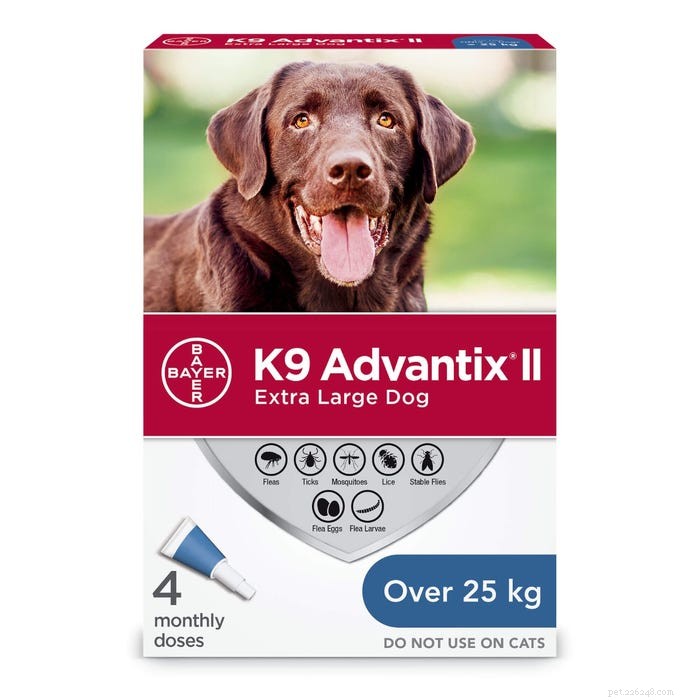 While many of the topical treatments above can help deal with the bite, they won't get rid of the pests that are driving your pet crazy. Specific treatments for some of the more persistent pests can be helpful in eliminating pests and preventing further infestations.
While many of the topical treatments above can help deal with the bite, they won't get rid of the pests that are driving your pet crazy. Specific treatments for some of the more persistent pests can be helpful in eliminating pests and preventing further infestations.
Monthly treatments, like Bayer K9 Advantix II Topical Flea &Tick Protection, are designed to prevent flea, tick, and other pests from latching onto your pooch, but they are also effective at killing off any pests that have already set up shop.
It's called a flea and tick treatment, but it works on so many more pests like lice and mosquitos
This fast-acting spray kills adult fleas and ticks and has growth inhibitors to prevent eggs from completing their maturation cycle. Zodiac Flea &Tick Spray can be used monthly for preventative treatment, or weekly to deal with recurring infestations.
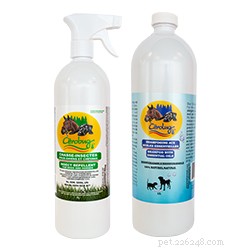 Some bugs need an extra deterrent to stay away from your pet. Bug sprays for people often contain toxic ingredients that aren't even good for us, no less our pets, so a pet-safe protectant from pests is a great idea if your dog is an outdoor adventurer. Here are a few of the best ways to tell bugs to buzz off:
Some bugs need an extra deterrent to stay away from your pet. Bug sprays for people often contain toxic ingredients that aren't even good for us, no less our pets, so a pet-safe protectant from pests is a great idea if your dog is an outdoor adventurer. Here are a few of the best ways to tell bugs to buzz off:
Products like Citrobug Insect Hunt made from essential oils can help keep flies, mosquitos, and other flying pests away. Simply spray it on like a bug spray each time to venture into the wild.
Baie Run Diatomaceous Earth can help treat mites and fleas at home by destroying their exoskeletons, leading to total body dehydration. The finely ground powder can be sprinkled onto your pet's coat to make your dog an inhospitable environment for any pests that get curious.
The Pet-Tek Paw Balm can help not only repel insects but heal damaged skin and protect them from infection. Think of it like an invisible boot that keeps pests from attacking your dog's paws. This is especially useful against ants and spiders that aren't looking for a feast, just a fight.
There’s no doubt that insect bites are a real pest for everyone involved. Luckily, most insect bites are mild and don’t need immediate medical care. There are at-home options for caring for bites and providing relief so that you and your furbaby can go back to your adventures in no time!
When in doubt, it’s always best to check in with your vet, especially if your pet has a history of sensitivities or more severe reactions. They’ll be able to give you the best advice and after-care instructions.
Check out Homes Alive Pets first aid and pest remedies for all of our at-home options!
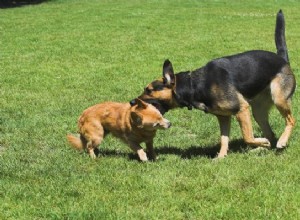
Когда собаки дерутся, это не обязательно для того, чтобы причинить вред, а только для того, чтобы обеспечить господство. Какой бы ни была причина, всегда очень неприятно быть свидетелем драки между двумя и более собаками, особенно, если одним из участников является ваша любимая собака. Лучший способ

Знаете ли вы, что значит очеловечить собаку? ? Ну, это явление, которое в последнее время стало более частым и популярным. Эта концепция вращается вокруг того, что люди переходят наше видение мира к нашим животным. Относиться к собакам как к детям, наряжать их в костюмы и отмечать их дни рождения, м